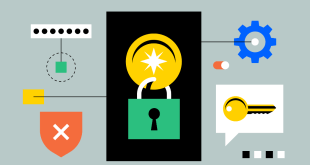In today’s digital landscape, web applications are essential for businesses to connect with their customers and deliver services seamlessly. However, the increasing number of cyber threats poses a significant challenge for web application security. One effective way to protect your web apps from malicious attacks is by deploying a Web Application Firewall (WAF). In this comprehensive guide, we will explore essential tips for optimizing WAF configurations and policies to enhance your web application security and keep cyber threats at bay.
Understanding the Role of WAFs
Web Application Firewalls act as a protective barrier between users and your web applications, inspecting every incoming request and response. A well-configured WAF filters out malicious traffic while allowing legitimate requests to reach the web server.
To ensure the best protection, it is crucial to understand the various types of WAFs available:
Network-Based WAFs:
These are deployed at the network perimeter and inspect traffic before it reaches the web server.
Cloud-Based WAFs:
Offered as a service, these WAFs are easy to deploy and scale, providing protection from the cloud.
Host-Based WAFs:
Installed on individual servers, these WAFs offer granular control over web application traffic.
Identifying and Prioritizing Security Threats
Before configuring your WAF, it’s essential to identify potential security threats specific to your web applications. Conducting a thorough security assessment and risk analysis will help prioritize threats and focus on safeguarding the most vulnerable areas.
Key Points:
Perform regular vulnerability assessments to stay on top of potential security risks.
Identify common attack vectors like SQL injection, cross-site scripting (XSS), and distributed denial-of-service (DDoS) attacks.
Customizing WAF Configurations
Customization plays a vital role in optimizing WAF configurations to suit your web application’s unique requirements. Out-of-the-box configurations may not be sufficient to protect against sophisticated threats.
Best Practices:
Tailor rule sets to your application’s behavior and requirements.
Regularly update WAF rules to keep up with emerging threats and security patches.
Utilizing Positive and Negative Security Models
WAFs employ two primary security models: positive security and negative security models.
Positive Security Model:
Defines explicitly allowed behavior and blocks everything else. It ensures only valid inputs and requests are processed.
Negative Security Model:
Defines known attack patterns and blocks them while allowing everything else. It protects against known vulnerabilities.
For comprehensive protection, use a combination of both models.
Employing Rate Limiting and IP Blocking
Limiting the number of requests from an IP address (rate limiting) and blocking malicious IP addresses can prevent various types of attacks, including brute force attacks and DDoS attacks.
Rate Limiting:
Restrict the number of requests from a single IP address within a specific time frame.
IP Blocking:
Automatically block IP addresses exhibiting suspicious or malicious behavior.
Web Application Firewall Monitoring
Monitoring your WAF is crucial to ensure optimal performance and identify any potential threats that might have evaded initial detection.
Real-time Monitoring:
Keep track of incoming and outgoing traffic for suspicious patterns.
Incident Response Plan:
Have a well-defined plan to handle security incidents effectively.
Regular Security Audits and Penetration Testing
Conducting periodic security audits and penetration testing helps you stay ahead of potential vulnerabilities and strengthens your WAF configurations.
Security Audits:
Evaluate the effectiveness of your WAF configurations and policies periodically.
Penetration Testing:
Simulate real-world attacks to identify and fix vulnerabilities proactively.
Educate Your Team on WAF Best Practices
Security is a collective responsibility, and it’s essential to educate your development and IT teams on WAF best practices.
Training Workshops:
Conduct regular workshops and training sessions on web application security.
Knowledge Sharing:
Encourage your team to share their learnings and experiences in handling security incidents.
Final Words
Securing your web applications is a top priority in today’s threat landscape. Optimizing your WAF configurations and policies using the tips mentioned above will significantly enhance your web application security. Remember to customize your WAF, identify threats, and regularly monitor and audit your security measures to fortify your web apps against cyber attacks effectively.
Commonly Asked Questions
Q1: What is a Web Application Firewall (WAF)?
A: A WAF is a security solution that protects web applications by monitoring and filtering HTTP traffic between a user and a web application, blocking malicious requests and allowing legitimate ones.
Q2: How do WAFs differ from traditional firewalls?
A: Unlike traditional firewalls that focus on network traffic, WAFs specifically target web application traffic, inspecting HTTP requests and responses for potential threats.
Q3: What are some common WAF deployment options?
A: WAFs can be deployed as network-based, cloud-based, or host-based solutions, each offering unique benefits based on your security needs and infrastructure.
Q4: Can a WAF replace the need for secure coding practices?
A: While WAFs provide an additional layer of security, they should not replace secure coding practices. Combining both ensures a comprehensive security approach.
Q5: How often should WAF rules be updated?
A: WAF rules should be updated regularly, ideally as soon as new threats or vulnerabilities are identified, to maintain effective protection against emerging risks.
 webfily
webfily



